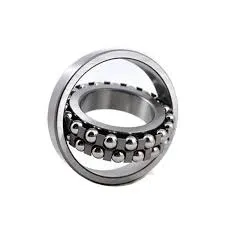
10 月 . 20, 2024 03:15 Back to list
angular contact bearings
Angular Contact Bearings An Overview
Angular contact bearings are a specific type of rolling element bearing designed to handle both axial and radial loads. Their unique geometry allows them to accommodate high-speed applications with precision, making them ideal for a variety of industrial and mechanical applications. This article will provide an overview of angular contact bearings, discussing their design, applications, advantages, and maintenance considerations.
Design and Construction
Angular contact bearings consist of inner and outer rings with raceways that are angled relative to the axis of the bearing. This angle creates a point of contact between the rolling elements (balls or rollers) and the raceways, enabling them to support axial loads in one direction as well as radial loads. The angle of contact, typically between 15 to 40 degrees, defines the bearing's load capacity and performance characteristics.
These bearings come in various configurations, including single-row, double-row, and four-point contact designs. Single-row angular contact bearings are most commonly used and can handle axial loads in one direction. To accommodate loads in both directions, double-row bearings or pairs of single-row bearings can be used. The four-point contact design is particularly useful for applications where axial loads are significant and include specific arrangements to maximize performance.
Applications
Angular contact bearings are widely used in various industries due to their superior load-carrying capabilities and efficiency. Some common applications include
1. Machine Tool Spindles High-speed precision is crucial in machine tools, where angular contact bearings are employed to ensure smooth and accurate operation.
2. Electric Motors These bearings facilitate the reliable performance of electric motors, particularly in applications requiring high rotational speeds and minimal friction.
3. Automotive Components In the automotive industry, angular contact bearings are used in wheel hubs, transmissions, and differential assemblies, where they support both radial and axial loads from vehicle operations.
4. Aerospace The aerospace sector requires bearings that can withstand extreme conditions, and angular contact bearings are frequently used in landing gear, turbines, and other critical applications.
5. Robotics With the rise of automation, angular contact bearings play a significant role in robotic arms and joints, providing the necessary precision and reliability.
Advantages
The choice of angular contact bearings over other bearing types offers several benefits
angular contact bearings

- High Load Capacity Their design allows them to carry higher loads compared to standard ball bearings. This load capacity makes them suitable for heavy-duty applications. - High-Speed Performance Angular contact bearings are optimized for high-speed operations, helping reduce friction and heat generation.
- Versatility They can be configured to accommodate a range of axial and radial load combinations, making them suitable for various applications.
- Precision They provide accurate alignment, which is critical for applications that require close tolerances and precision engineering.
- Durability With proper maintenance, angular contact bearings can provide extended service life, reducing downtime and operational costs.
Maintenance Considerations
To ensure the longevity and optimal performance of angular contact bearings, regular maintenance is essential. Here are some maintenance tips
- Proper Lubrication Bearings should be adequately lubricated to reduce friction. The type of lubrication should be selected based on the operational environment and bearing speed.
- Contamination Control Keep bearings free from contaminants like dust, dirt, and moisture. Regular inspection and cleaning are key to preventing premature wear.
- Load Monitoring Ensure that the loads applied to the bearings are within their specified limits to prevent overloading and damage.
- Vibration Analysis Monitor vibrations as part of a predictive maintenance plan. Unusual vibration patterns can indicate bearing failure or misalignment.
- Regular Inspection Conduct routine inspections to check for wear and tear, ensuring that bearings are replaced timely to avoid costly downtimes.
Conclusion
Angular contact bearings are a crucial component in many engineering applications. Their ability to handle both axial and radial loads while maintaining high speeds makes them indispensable in modern machinery. Understanding their design, benefits, and maintenance requirements is essential for engineers and technicians who aim to enhance performance and reliability in their systems. By implementing best practices in maintenance and installation, industries can optimize the performance of angular contact bearings and achieve their operational goals.
Latest news
-
Unlocking Efficiency with Spherical Roller Bearings
NewsOct.29,2024
-
The Ultimate Guide to Thrust Ball Bearings
NewsOct.29,2024
-
The Power of Thrust Roller Bearings: Engineered for Excellence
NewsOct.29,2024
-
The Power of Deep Groove Ball Bearings for Your Application Needs!
NewsOct.29,2024
-
The Power and Performance of Cylindrical Roller Bearings
NewsOct.29,2024
-
High-Quality Ball Bearing Manufacturing Machines
NewsOct.29,2024
